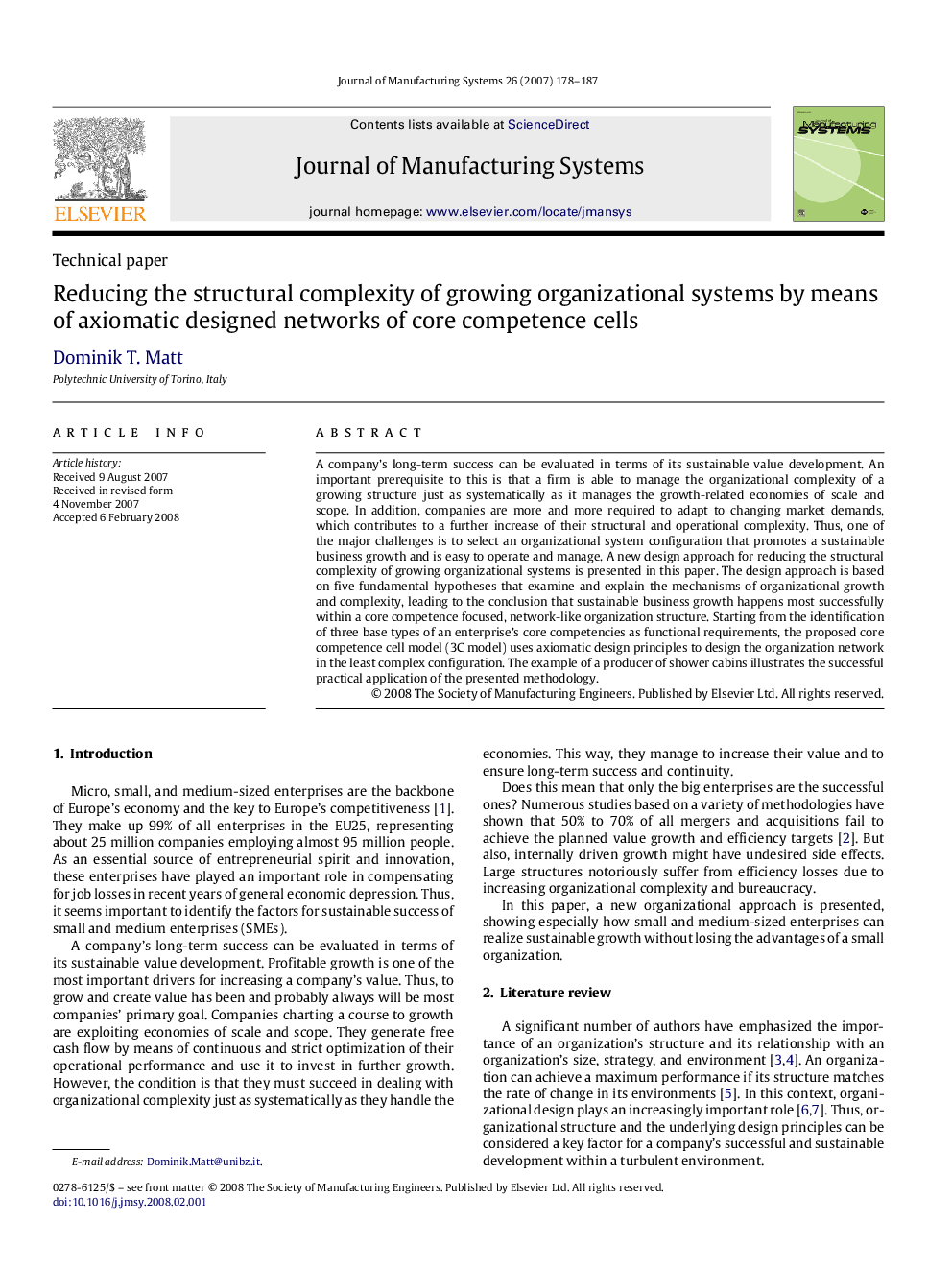| کد مقاله | کد نشریه | سال انتشار | مقاله انگلیسی | نسخه تمام متن |
|---|---|---|---|---|
| 1697856 | 1519260 | 2007 | 10 صفحه PDF | دانلود رایگان |

A company’s long-term success can be evaluated in terms of its sustainable value development. An important prerequisite to this is that a firm is able to manage the organizational complexity of a growing structure just as systematically as it manages the growth-related economies of scale and scope. In addition, companies are more and more required to adapt to changing market demands, which contributes to a further increase of their structural and operational complexity. Thus, one of the major challenges is to select an organizational system configuration that promotes a sustainable business growth and is easy to operate and manage. A new design approach for reducing the structural complexity of growing organizational systems is presented in this paper. The design approach is based on five fundamental hypotheses that examine and explain the mechanisms of organizational growth and complexity, leading to the conclusion that sustainable business growth happens most successfully within a core competence focused, network-like organization structure. Starting from the identification of three base types of an enterprise’s core competencies as functional requirements, the proposed core competence cell model (3C model) uses axiomatic design principles to design the organization network in the least complex configuration. The example of a producer of shower cabins illustrates the successful practical application of the presented methodology.
Journal: Journal of Manufacturing Systems - Volume 26, Issues 3–4, July 2007, Pages 178–187